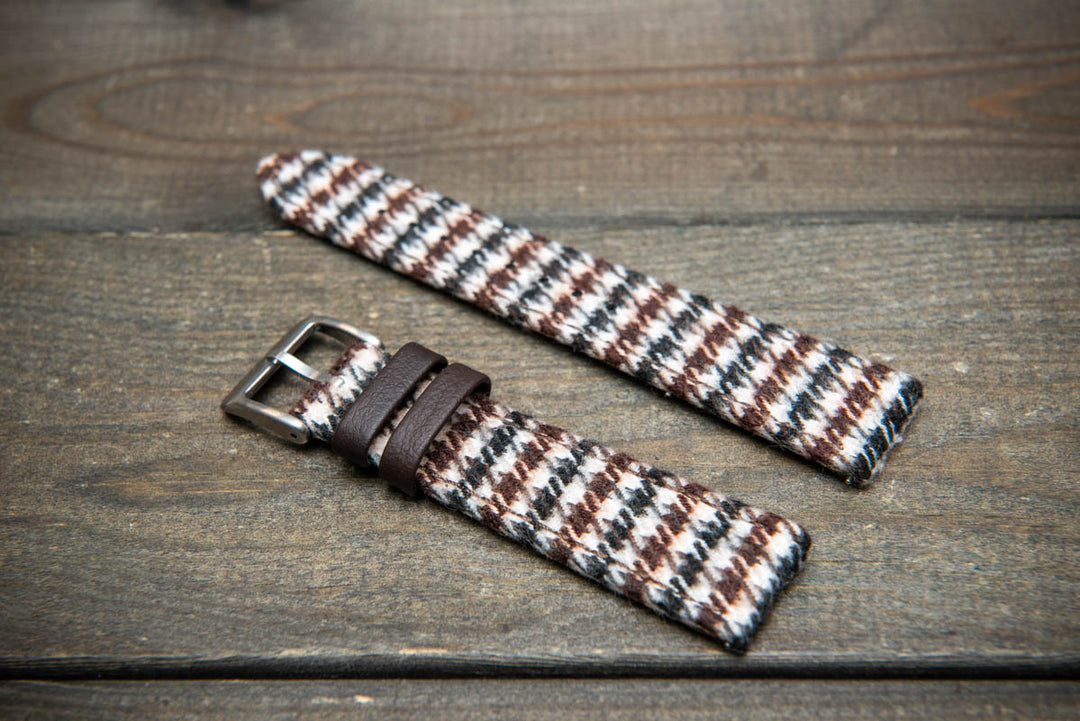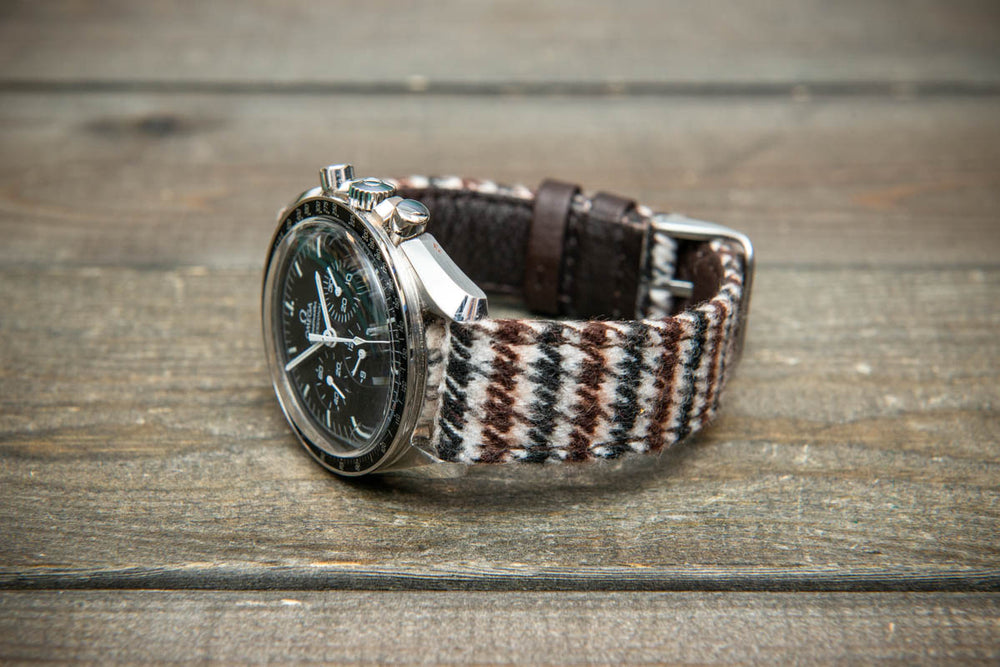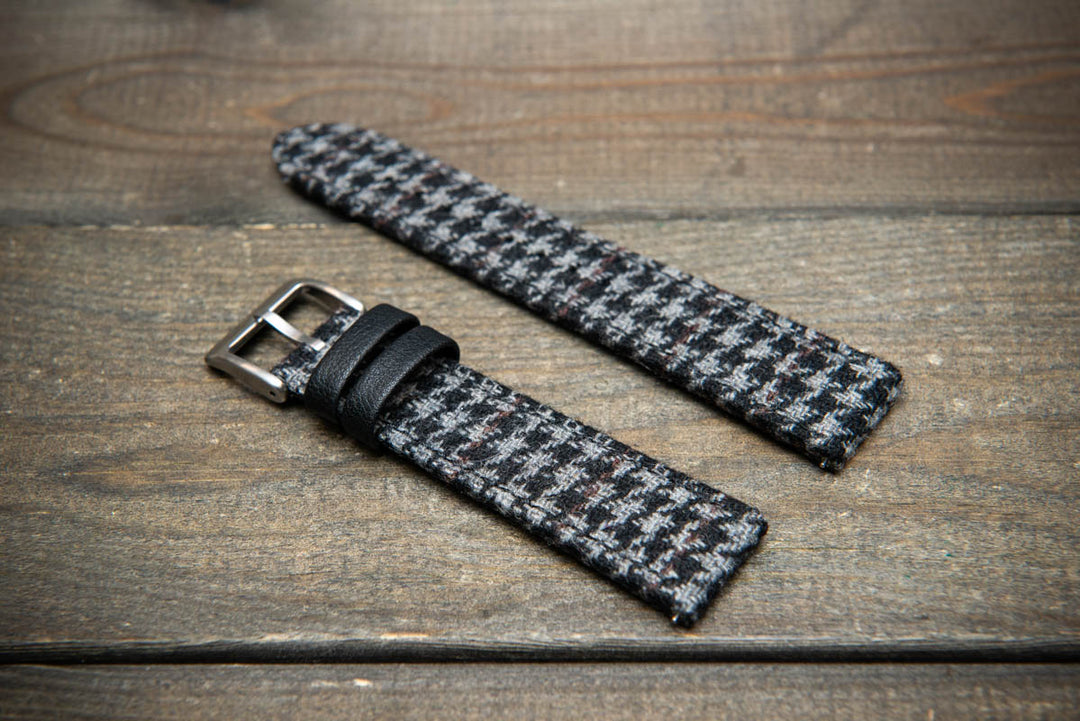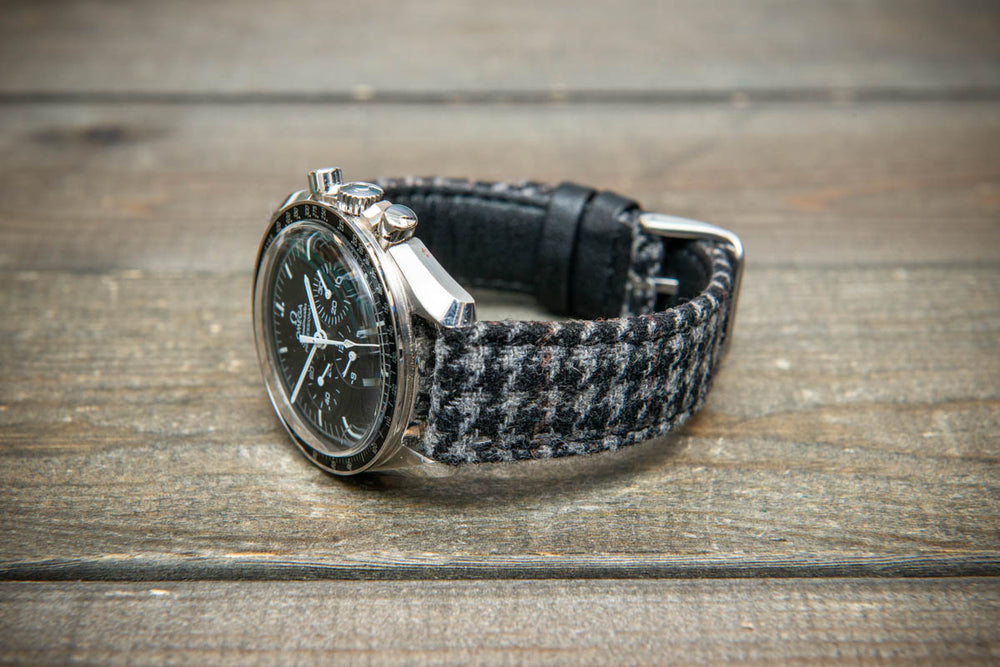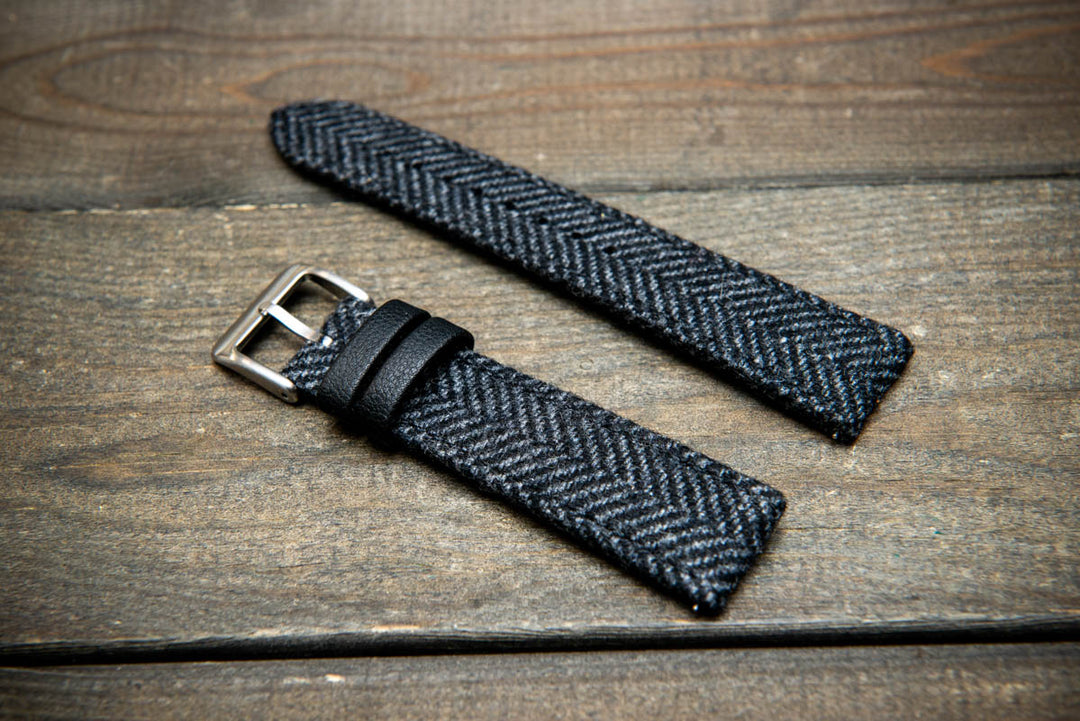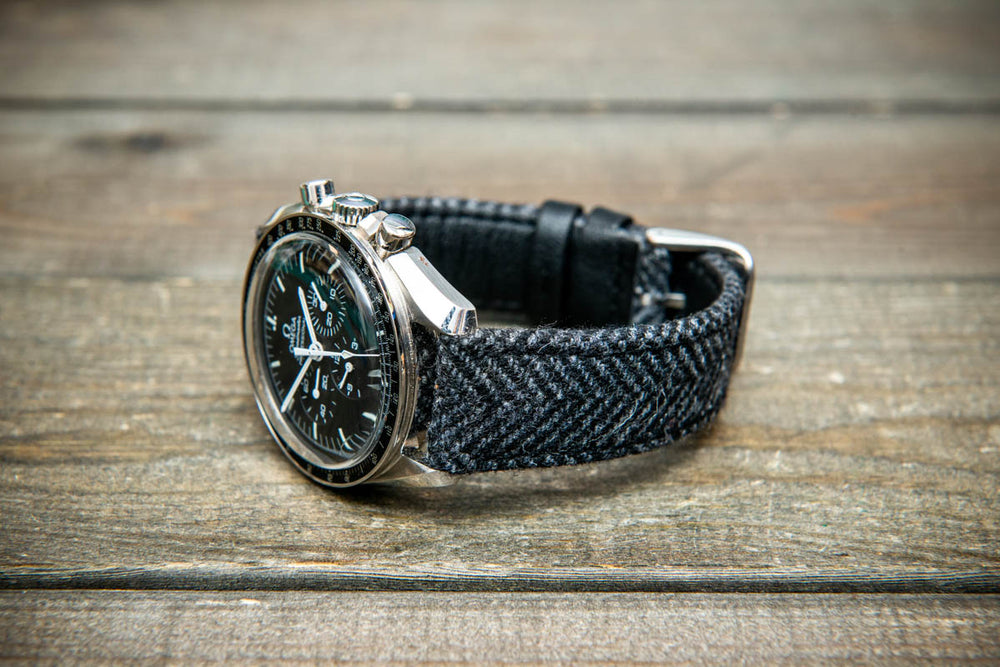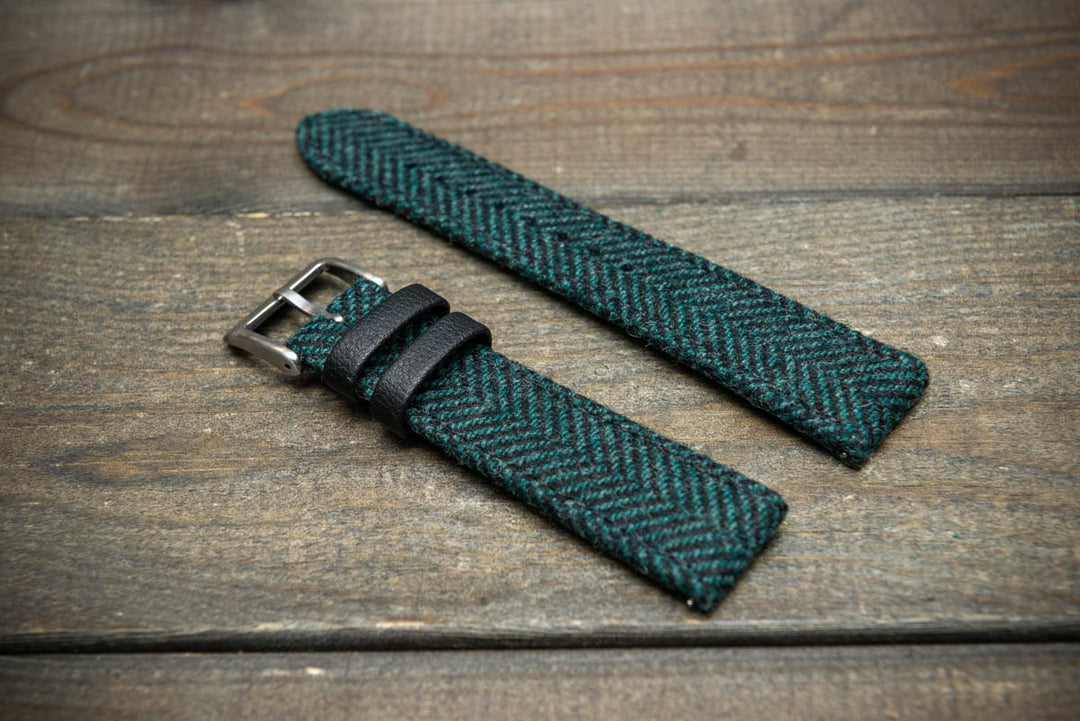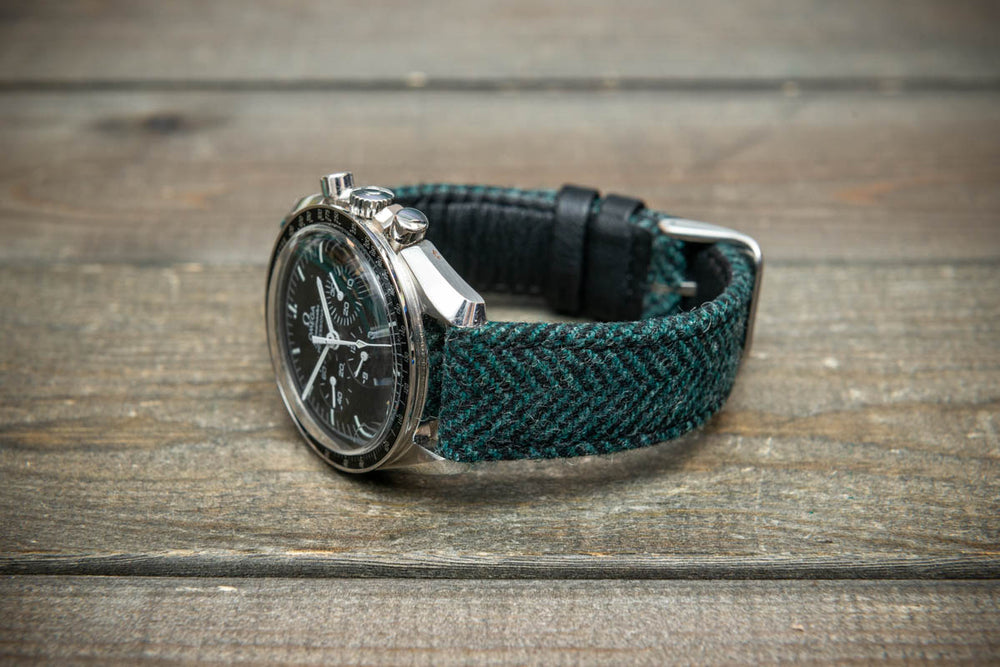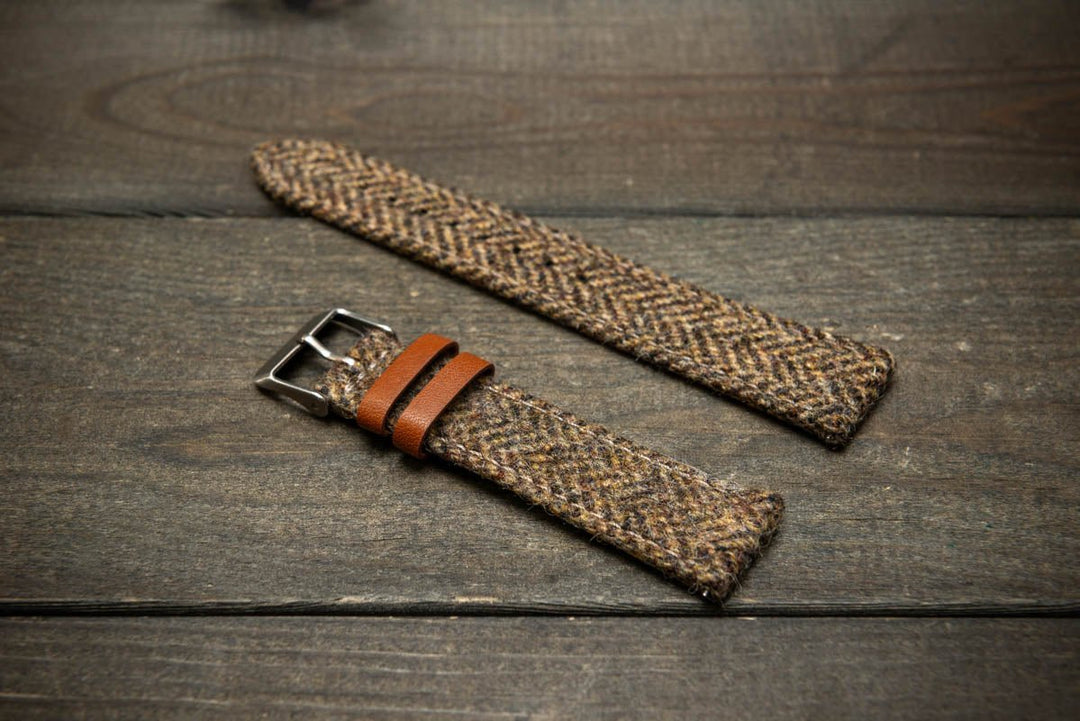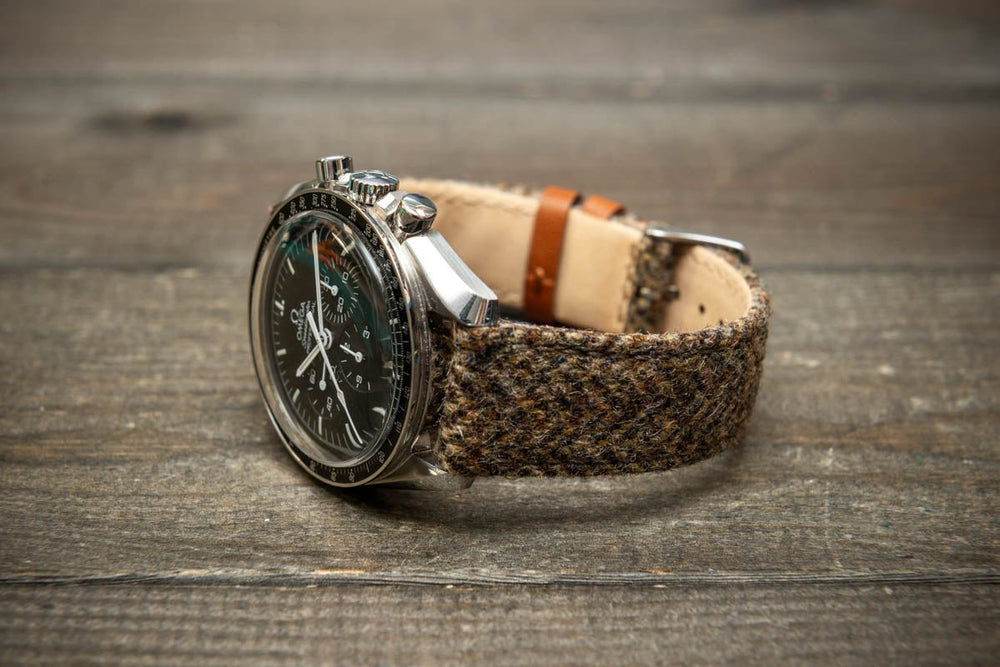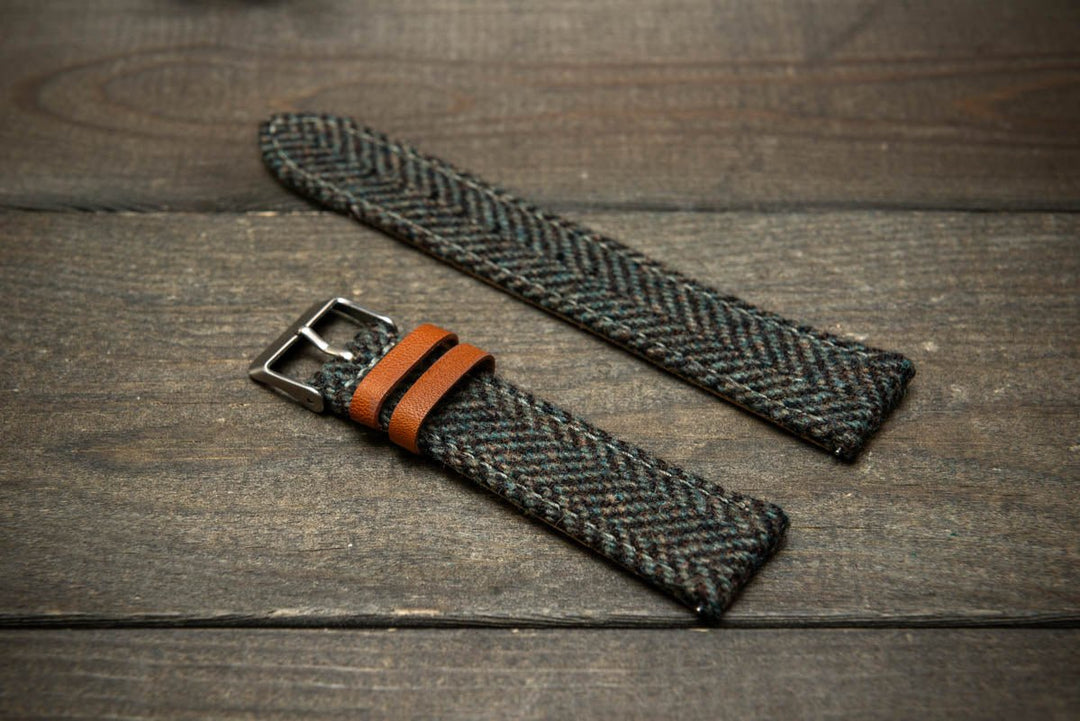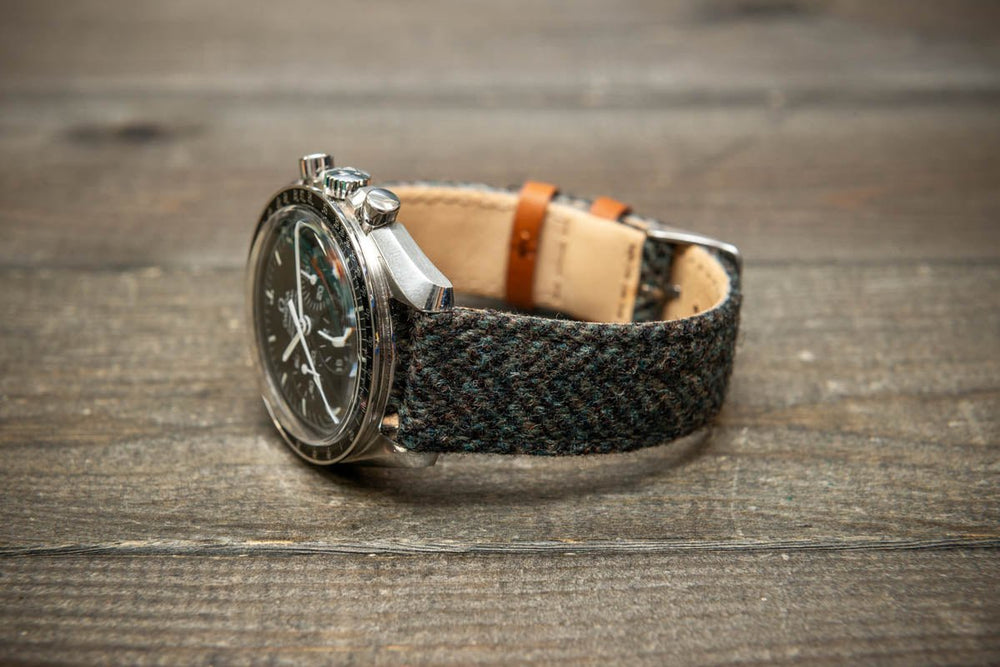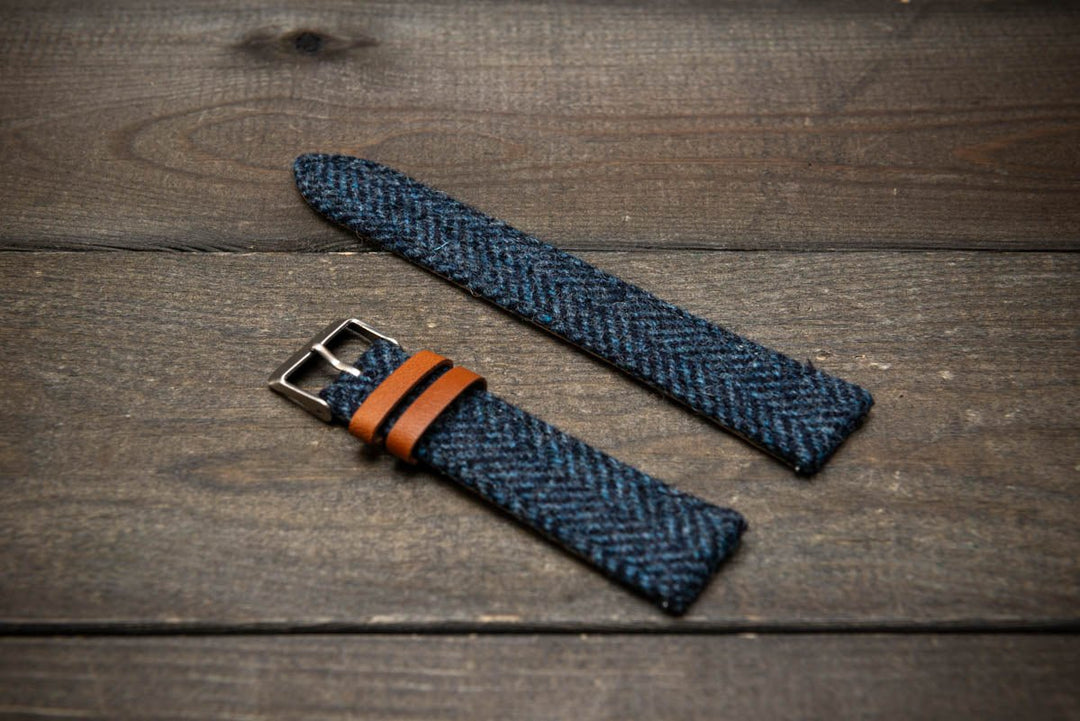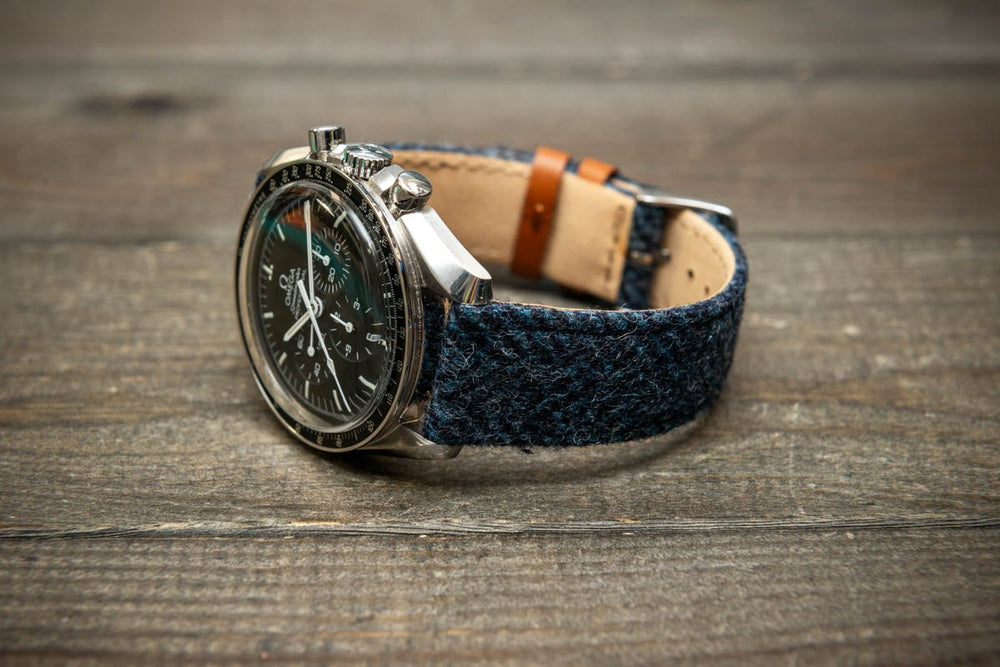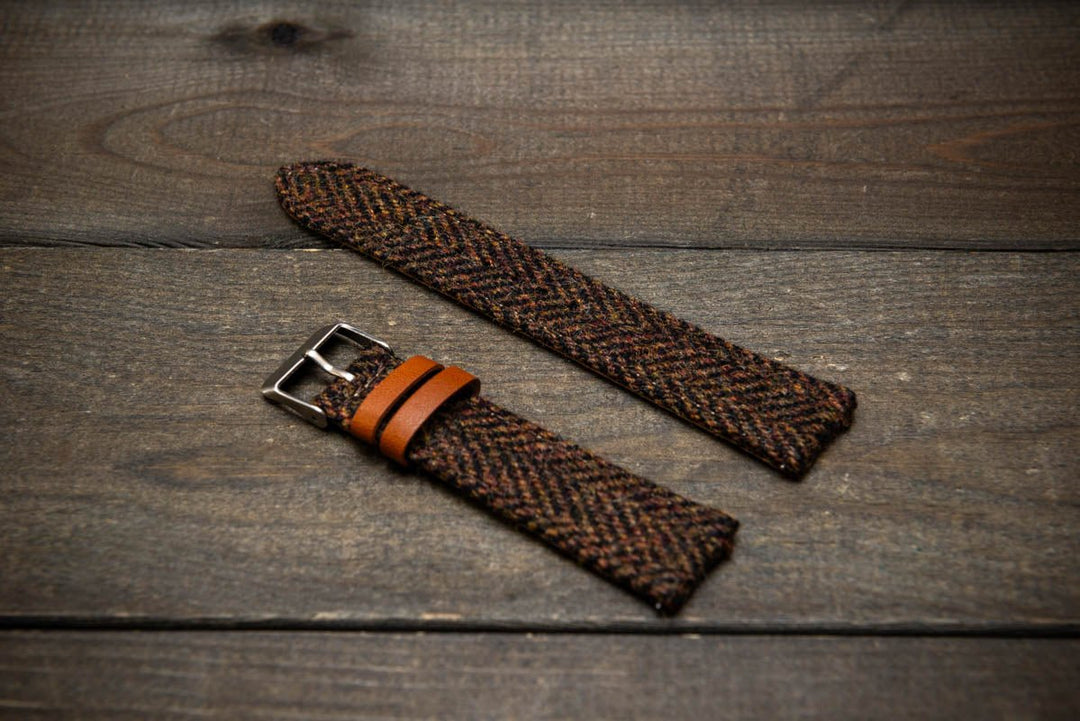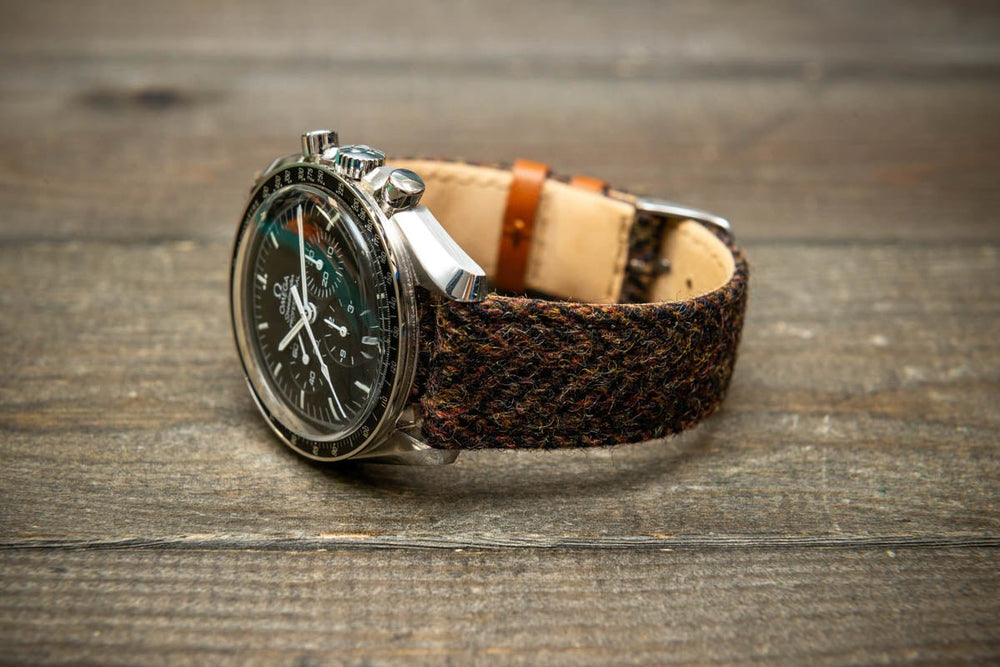What’s the Difference Between Genuine and Synthetic Leather, and How Does It Affect Strap Durability?
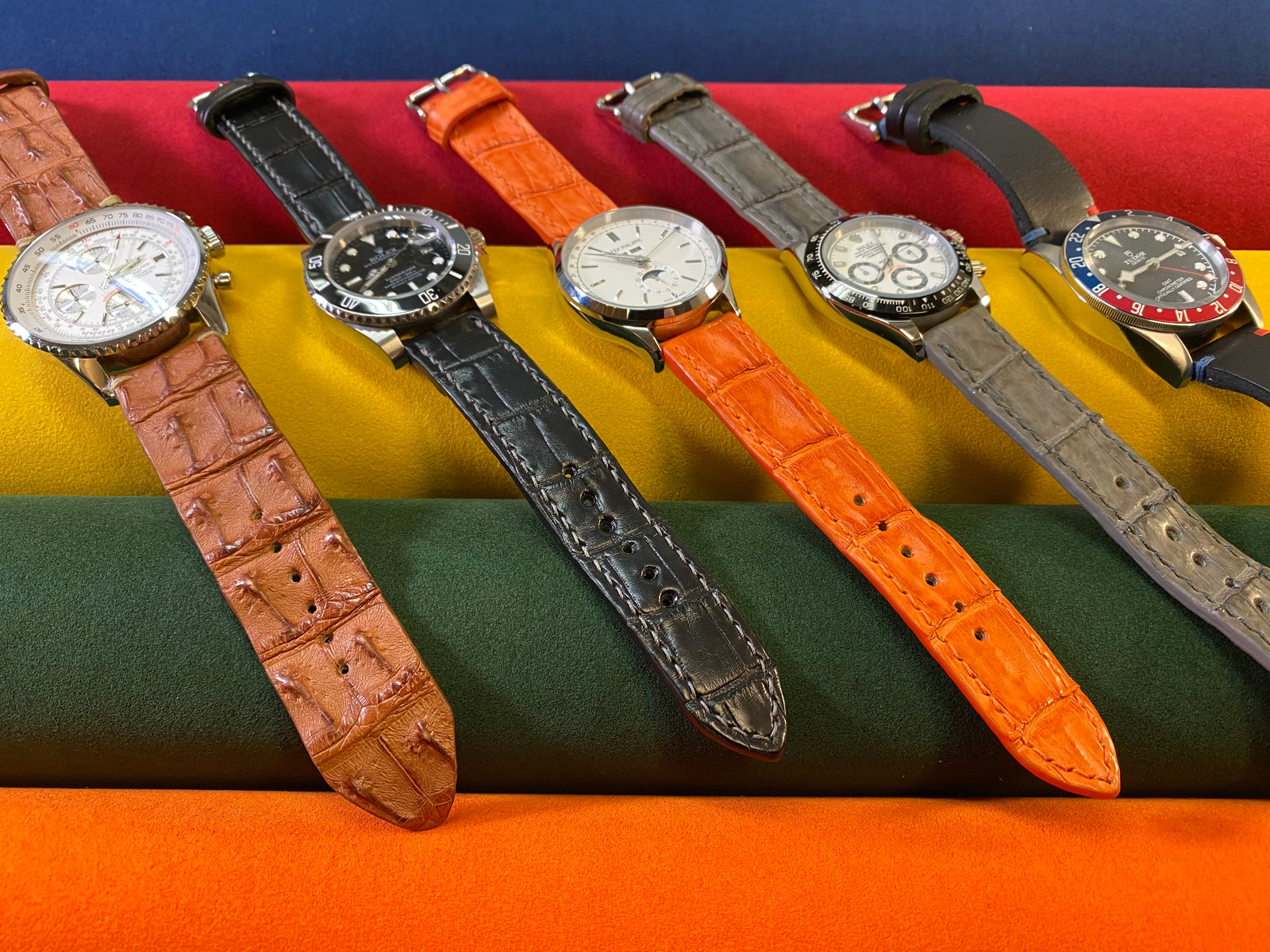
Choosing between genuine and synthetic leather for your watch strap is more than a simple aesthetic decision; it’s a choice that impacts comfort, durability, and even the story your watch tells. At FinWatchStraps, we know a watch strap should be more than a mere accessory—it’s a statement, an extension of your style, and a companion on your adventures. Whether you’re after a classic, timeless look or a practical everyday solution, understanding the nuances between leather types can help you select a strap that will age with grace or stay pristine as the day you bought it.
Let’s explore the world of leather and dive into what sets genuine leather apart from synthetic, how each material performs under different conditions, and why choosing the right strap can elevate your entire watch-wearing experience.
The Craft and Character of Genuine Leather
Genuine leather carries with it an enduring legacy of craftsmanship. Each strap made from real leather reflects centuries of artisanal skill, as well as the unique characteristics of the hide it was crafted from. This natural material is anything but uniform—its beauty is in its individuality, evolving over time to develop a patina that’s unique to you.
Production Process
The journey of genuine leather from raw hide to refined strap is both art and science, beginning with the selection of animal hides (often from cattle, goats, or pigs) that will withstand the rigors of tanning.
- Vegetable Tanning: This method, one of the oldest, uses natural tannins from tree bark and plants to treat the leather. It’s a slower process, but the results are stunning: vegetable-tanned leather has rich, warm colors that deepen with time. It develops a patina unique to each wearer, making your strap truly one-of-a-kind. Many watch lovers choose vegetable-tanned leather precisely for this reason—it’s a material that tells a story with every scratch, scuff, and mark.
- Chrome Tanning: A more modern, quicker process, chrome tanning involves treating the leather with chromium salts, giving it a softer, more flexible feel. Chrome-tanned leather is often smoother and more resistant to fading, though it doesn’t develop the same depth of color as vegetable-tanned leather. However, it’s supple and comfortable right from the start, making it a popular choice for those seeking comfort and longevity.
Each genuine leather strap tells a story, from the care that went into tanning to the unique wear patterns it develops over time. Genuine leather is tactile and alive in a way synthetic materials simply cannot replicate.
The Practical Appeal of Synthetic Leather
Synthetic leather, often called faux leather or PU leather, is a modern invention designed to mimic the look of genuine leather without the cost or maintenance. While it may not have the same depth of character as real leather, it offers certain benefits that make it a worthwhile choice, especially for those seeking practicality and budget-friendliness.
Production Process
Synthetic leather begins with a fabric base, usually polyester, coated with layers of plastic—typically polyurethane (PU) or polyvinyl chloride (PVC). These layers are textured and colored to resemble the natural grain and appearance of real leather. Synthetic leather’s main strength lies in its consistency; every piece looks the same and wears in a predictable manner.
Although it lacks the breathability and warmth of genuine leather, synthetic leather’s water resistance and affordability make it a practical choice for many.
How Genuine and Synthetic Leather Compare: Durability, Comfort, and More
Let’s break down the strengths and weaknesses of each material across key factors: durability, comfort, water resistance, aesthetics, and cost.
1. Wear and Tear: How Each Material Ages Over Time
Genuine Leather: Over time, genuine leather develops a beautiful patina—a natural sheen and slight darkening that give it character and individuality. This patina isn’t just cosmetic; it’s a testament to the journeys and adventures you’ve shared with your watch. Genuine leather resists scratches well and, with proper care, becomes more supple with age. Each mark adds depth and uniqueness, turning your strap into a personal artifact that holds memories.
Synthetic Leather: Synthetic leather doesn’t age the same way. Because of its plastic base, it’s more prone to cracking and peeling, especially in areas that bend frequently, like near the buckle. While it’s durable in terms of water resistance, it lacks the charm of aging naturally, making it a good choice for those who prefer a strap that looks the same day after day without showing signs of wear.
2. Water Resistance: A Deciding Factor for Daily Wearers
Genuine Leather: Genuine leather has an aversion to water; it’s not naturally water-resistant, and exposure to moisture can lead to discoloration, warping, or even rot if not dried properly. While some genuine leather straps are treated with water-resistant coatings, they are best kept away from water. Light splashes are manageable, but it’s wise to remove a genuine leather strap before swimming or showering.
Synthetic Leather: Synthetic leather shines in this category. Its plastic surface naturally repels water, making it a practical choice for those who live in humid climates or want a strap that can handle an unexpected rain shower or an intense workout. However, synthetic leather is not entirely waterproof, and prolonged exposure to water can eventually weaken the material.
3. Comfort and Feel: The Tactile Difference
Genuine Leather: One of the most beloved features of genuine leather is how it feels against the skin. It breathes, adapts to your body temperature, and softens over time, conforming to your wrist. There’s a warmth to real leather—a sense of authenticity that synthetic materials simply lack. For many, the feel of genuine leather is irreplaceable, providing both comfort and luxury that enhances the overall wearing experience.
Synthetic Leather: Synthetic leather lacks the breathability and flexibility of genuine leather, which can make it feel less comfortable, especially in extreme temperatures. It doesn’t mold to the wrist in the same way, and its plastic surface can feel stiffer, especially when new. However, synthetic leather is usually hypoallergenic, making it a good option for people with sensitive skin.
4. Aesthetics and Aging: Beauty in Imperfection
Genuine Leather: Genuine leather is all about individuality. No two straps are exactly alike, thanks to natural grain variations and the way it develops a patina over time. It’s the imperfections—small marks, scratches, and scuffs—that give genuine leather its character and charm, appealing to those who appreciate items that tell a story.
Synthetic Leather: Synthetic leather offers a uniform appearance that remains consistent over time. While it can closely mimic the look of real leather from a distance, it doesn’t develop the same character with age. This consistency can be a plus for those who prefer a sleek, unchanging appearance, but it lacks the depth and uniqueness that genuine leather offers.
5. Price: Investment vs. Practicality
Genuine Leather: Genuine leather is an investment. The process of tanning and finishing natural hides is time-intensive and requires skilled craftsmanship, which is reflected in the price. However, with proper care, a genuine leather strap can last for years, making it a worthwhile expense for those who value quality and durability.
Synthetic Leather: Synthetic leather is more budget-friendly, providing an affordable option for those who like to switch out their straps frequently or want a low-maintenance accessory. While it may not last as long as genuine leather, it’s a practical choice for everyday wear.
Care Tips to Maximize Strap Life
Proper care can significantly extend the life of both genuine and synthetic leather straps. Here’s how to keep each type looking its best:
Genuine Leather Care
- Avoid Water Exposure: Remove your watch before washing hands, swimming, or showering.
- Regular Cleaning: Use a soft, dry cloth to remove dust and dirt. Apply a leather conditioner every few months to keep the leather soft and hydrated.
- Store Properly: Keep your strap out of direct sunlight and away from heat sources to prevent drying and cracking.
Synthetic Leather Care
- Wipe with a Damp Cloth: Synthetic leather is easy to clean. Use a damp cloth to remove dirt and dust.
- Limit Heat Exposure: Heat can cause synthetic leather to crack, so avoid placing it near heaters or in direct sunlight for prolonged periods.
- Prevent Scratches: While synthetic leather is somewhat scratch-resistant, it’s best to handle it gently to preserve its appearance.
Final Thoughts: Choosing the Right Leather for You
When it comes down to it, the choice between genuine and synthetic leather is personal. Genuine leather offers timeless appeal, with character that evolves over time, making it a treasure for those who value craftsmanship. Synthetic leather provides a practical, budget-friendly option that can handle a bit more rough-and-tumble.
Explore our collection at FinWatchStraps to find the strap that best suits your needs. Whether you’re after the luxury of genuine leather or the practicality of synthetic, we have a range of options to match your style, budget, and lifestyle.


